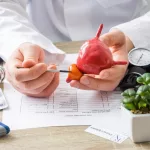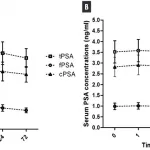Hey there! If you’re reading this, chances are you (or someone you love) has a prescription for hydrochlorothiazide and you’re wondering how much to take, what forms are out there, and what to watch out for. Good news – you’ve landed in the right place. In the next few minutes we’ll break down everything you need to know about hydrochlorothiazide dosage, strengths, how to take it, and the safety tips that keep you feeling your best. Let’s dive in, shall we?
What Is Hydrochlorothiazide
Hydrochlorothiazide (often shortened to HCTZ) belongs to the thiazide class of diuretics. Think of it as a friendly water‑coach for your kidneys: it nudges the kidneys to let go of excess sodium and water, which in turn eases blood‑pressure pressure and reduces swelling (edema). The drug works in the distal tubule of the kidney, where it blocks the re‑absorption of sodium and chloride. The result? More urine, less fluid hanging around where it shouldn’t.
It’s one of the most common blood pressure medications on the market, and doctors love it because it’s cheap, effective, and works well together with many other antihypertensives.
Forms & Strengths
Hydrochlorothiazide comes in a few handy formats, each with its own set of strengths. Here’s a quick snapshot:
| Form | Strength(s) Available | Typical Uses |
|---|---|---|
| Oral tablet | 12.5 mg, 25 mg, 50 mg | Hypertension, edema, nephrolithiasis |
| Oral capsule | 12.5 mg | Often used for lower‑dose starts in older adults |
| Powder for oral suspension | 10 mg / mL | Children or patients who have trouble swallowing pills |
All three formats are FDA‑approved according to Healthline, and they give your prescriber flexibility to match the dose to your body and your lifestyle.
Dosage by Condition
Now, the heart of the matter – how much should you actually take? The answer depends on why you’re taking the drug. Below is a friendly guide that follows the most common dosing recommendations (source: Drugs.com).
| Condition | Typical Starting Dose | Usual Maintenance Range | Special Notes |
|---|---|---|---|
| Hypertension (adults) | 25 mg once daily | Up to 50 mg daily (single or divided BID) | Higher than 50 mg rarely needed if combined with other agents |
| Edema (adults) | 25 mg once daily | 25–100 mg once or twice daily | Intermittent schedules (e.g., 3–5 days/week) can lessen electrolyte shifts |
| Nephrocalcinosis | 25 mg once daily | Up to 50 mg twice daily | Goal is to reduce calcium stone formation |
| Osteoporosis (off‑label) | 25 mg daily | May increase to 50 mg | Works by reducing urinary calcium loss |
| Diabetes insipidus | 50 mg once daily | Up to 100 mg daily | Helps concentrate urine |
| Edema (pediatrics) | Varies by age – see below | Based on weight (mg/kg) | Strict pediatric dosing needed; see next section |
How to Take It
Getting the most out of hydrochlorothiazide is as much about timing and habits as it is about the number on the label.
- Take it in the morning. Most people experience a mild diuretic effect for 6‑12 hours, so a morning dose helps avoid those inconvenient nighttime bathroom trips.
- With food or without? It doesn’t matter much; the drug is well absorbed either way. If you have a sensitive stomach, a light snack can ease any mild nausea.
- Swallow tablets whole. Crushing or chewing can affect the coating (if present) and may change how the medicine is absorbed.
- Mixing the suspension. For the powder‑for‑suspension, shake the bottle well, measure the exact volume with the supplied spoon or a proper syringe, and take it right away.
And a quick reminder: never double‑dose if you miss a pill. Take it as soon as you remember unless it’s almost time for the next dose; then just skip the missed one.
Special Populations
One size doesn’t fit all. Here’s how dose adjustments look for different groups.
Older Adults (≥65 years)
Older folks often have slower kidney function and a higher risk of orthostatic hypotension. Starting at a lower dose—12.5 mg or 25 mg—and titrating slowly is the safest route.
Prenatal & Lactation
Hydrochlorothiazide crosses into breast milk, and its safety in pregnancy is not well‑established. Most clinicians avoid it during pregnancy unless the benefits clearly outweigh the risks. If you’re nursing, talk to your doctor about alternatives.
Kidney or Liver Impairment
Kidney function guides the dose: with an eGFR > 60 mL/min you can use standard doses; 30‑60 mL/min, drop to 12.5 mg; below 30 mL/min, many providers prefer to avoid the drug altogether. Liver disease can also heighten the risk of fluid imbalances, so a careful, lower‑dose approach is advisable.
Pediatric Dosing
Children aren’t just “small adults.” Dose is calculated by weight:
- Infants < 6 months: Up to 3 mg/kg / day, split into two doses.
- Children 6 months – 2 years: 1–2 mg/kg / day, either a single daily dose or divided BID.
Always double‑check the exact weight‑based calculation with your pediatrician – a small error can lead to an unnecessary electrolyte swing.
Safety & Monitoring
Hydrochlorothiazide is generally safe, but like any medication, it has a checklist of potential side effects and red‑flag symptoms.
Common Side Effects
- Low potassium (hypokalemia) – think muscle cramps, weakness, or fatigue.
- Low sodium (hyponatremia) – can cause nausea, headache, or confusion.
- Elevated uric acid – may trigger gout attacks.
- Increased blood sugar – watch if you have diabetes.
Red‑Flag Symptoms
If you notice any of the following, call your provider right away:
- Severe dizziness or fainting (possible too‑low blood pressure).
- Rapid, irregular heartbeats.
- Persistent muscle pain or cramps despite potassium intake.
- New‑onset skin lesions or photosensitivity (hydrochlorothiazide is linked with rare skin cancers).
Lab Monitoring
Your doctor will usually order baseline labs before you start, then repeat them after one to two weeks and periodically thereafter:
- Serum electrolytes (especially potassium, sodium, magnesium).
- Blood urea nitrogen (BUN) and creatinine to watch kidney function.
- Uric acid if you have a history of gout.
- Blood glucose if you’re diabetic.
Because the drug can shift fluids, keeping an eye on your weight (a sudden drop may signal dehydration) is also wise.
Practical Tools for Patients & Providers
Let’s make life easier with a few handy resources.
Printable Dosage Chart
| Condition | Start | Typical Max |
|---|---|---|
| Hypertension | 25 mg once daily | 50 mg daily |
| Edema | 25 mg once daily | 100 mg daily |
| Nephrocalcinosis | 25 mg once daily | 50 mg BID |
Print it, stick it on your fridge, and use it as a quick reference before each refill.
Medication‑Reminder Apps
Apps like Medisafe or MyTherapy send you gentle push notifications, so you never forget that morning dose. They also let you log side effects, which can be a handy talking point at your next doctor visit.
Sample Provider Note
“Start HCTZ 25 mg PO daily. Recheck electrolytes in 7‑10 days. If BP remains >140/90, consider uptitrating to 50 mg daily or adding a complementary antihypertensive.”
Having a clear note like this in your chart can streamline the follow‑up conversation.
Bottom Line – Your Quick Takeaways
Here’s the heart of the matter, distilled into bite‑size pieces you can remember even on a busy day:
- Start low, go slow. Most adults begin with 25 mg; many never need more than 50 mg.
- Choose the form that fits your life. Tablets for convenience, capsules for gentle starts, suspension for kids or swallow‑averse folks.
- Watch electrolytes. Low potassium and sodium are the most common bumps; a potassium‑rich diet or a supplement can help.
- Tailor the dose. Older adults, pregnant people, and those with kidney disease often need reduced doses.
- Stay in touch with your provider. Regular labs and honest symptom reporting keep the therapy safe and effective.
Remember, medication is a partnership. Your doctor prescribes the dose, but you’re the one living with it day‑to‑day. So ask questions, track how you feel, and never hesitate to raise a concern. If you’ve tried hydrochlorothiazide, what’s been your experience? Did the dosing feel right, or did you need adjustments? Share your story in the comments – you never know who might benefit from your insight!
And if you’re still uncertain about the right dose for you, schedule a quick chat with your pharmacist or healthcare provider. They can walk you through the numbers, check your labs, and help you strike that perfect balance between control and comfort.
Stay healthy, stay curious, and as always, take care of yourself – one well‑timed dose at a time.
















Leave a Reply
You must be logged in to post a comment.